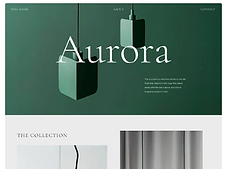
FREE AUDIT TO YOUR WEBSITE :
Layout x choosing a style
Minimalist Design: Clean, high-contrast layouts with ample white space to focus on CTAs and reduce distractions.
Storytelling/Immersive Design: Rich visuals and narrative-driven content to engage emotionally (e.g., parallax scrolling, video backgrounds).
Interactive/Frictionless UX: Features like chatbots, quizzes, or dynamic product builders to guide user decisions.
E-commerce Optimized: Grid-based product displays, sticky “Add to Cart” buttons, and urgency triggers like countdown timers.
Single-Page Scrolling: Streamlined navigation for mobile-first users, with anchored menus and progressive data collection.
Service-Focused “Expert” Layouts: Highlight credentials, case studies, and trust badges (e.g., certifications, testimonials) above the fold.
tactics x psychology to sell
-
CTA Placement: Minimalist sites use singular CTAs, while storytelling designs layer CTAs within narrative flows.
-
Navigation Complexity: Interactive sites simplify menus (≤5 items), whereas service-focused sites prioritize drop downs for detailed services.
-
Content Depth: Storytelling pages use long-form copy, while e-commerce designs prioritize bullet points and pricing clarity.
-
Loading Speed Emphasis: Minimalist and single-page styles prioritize fast load times (<2s), while immersive designs may sacrifice speed for rich media.
-
Trust Signals: Service-focused sites display certifications prominently; e-commerce sites highlight reviews and secure payment icons.
-
Color Psychology: Minimalist sites use monochrome palettes for simplicity, while interactive designs employ bold colors to guide attention.
-
Mobile Optimization: Single-page/scrolling designs are inherently mobile-friendly, whereas immersive sites often require adaptive media scaling.
-
Form Length: Service-focused sites use multi-step forms for lead quality; minimalism favors short “Email Only” CTAs.
-
Urgency Tactics: E-commerce relies on stock counters and discounts, while B2B/service sites emphasize “Book a Free Consult” scarcity.
-
Testing Frequency: High converters using interactive elements A/B test layouts weekly vs. minimalist sites optimizing quarterly.
results x metrics to watch/ adjust
1. Conversion Rate
Track the percentage of visitors who complete desired actions (e.g., purchases, form submissions). A low conversion rate often signals misaligned messaging, poor UX, or weak CTAs. Adjust by refining landing pages, A/B testing headlines, or simplifying checkout processes.
2. Bounce Rate
Measure the percentage of users who leave your site after viewing only one page. High bounce rates (e.g., >50%) indicate irrelevant content, slow load times, or poor targeting. Combat this by improving page relevance, optimizing meta descriptions, or enhancing mobile responsiveness.
3. Average Session Duration
Gauge how long visitors engage with your content. Short sessions (<2 minutes) suggest content isn’t resonating or navigation is confusing. Improve by adding video, interactive elements, or clearer internal links.
Why These Metrics Matter:
- Conversion Rate directly impacts revenue and goal achievement.
- Bounce Rate highlights usability or targeting flaws.
- Average Session Duration reflects content quality and user intent alignment.
Adjust campaigns, content, and design based on these insights to drive growth.









